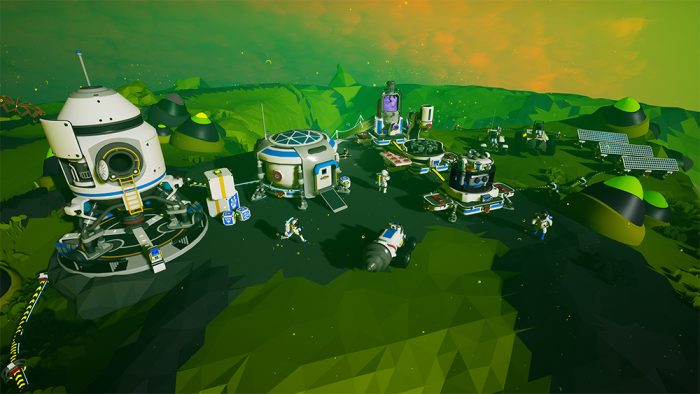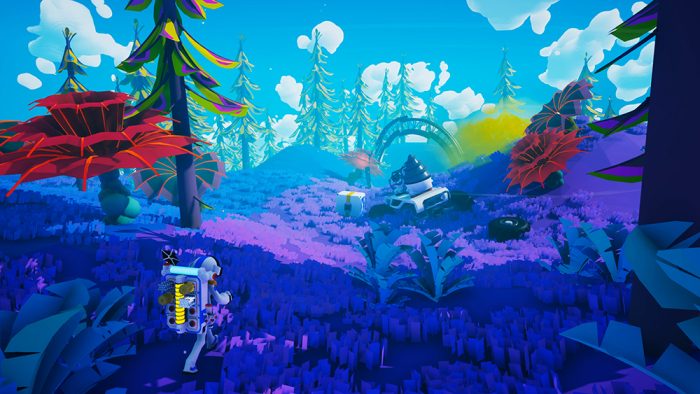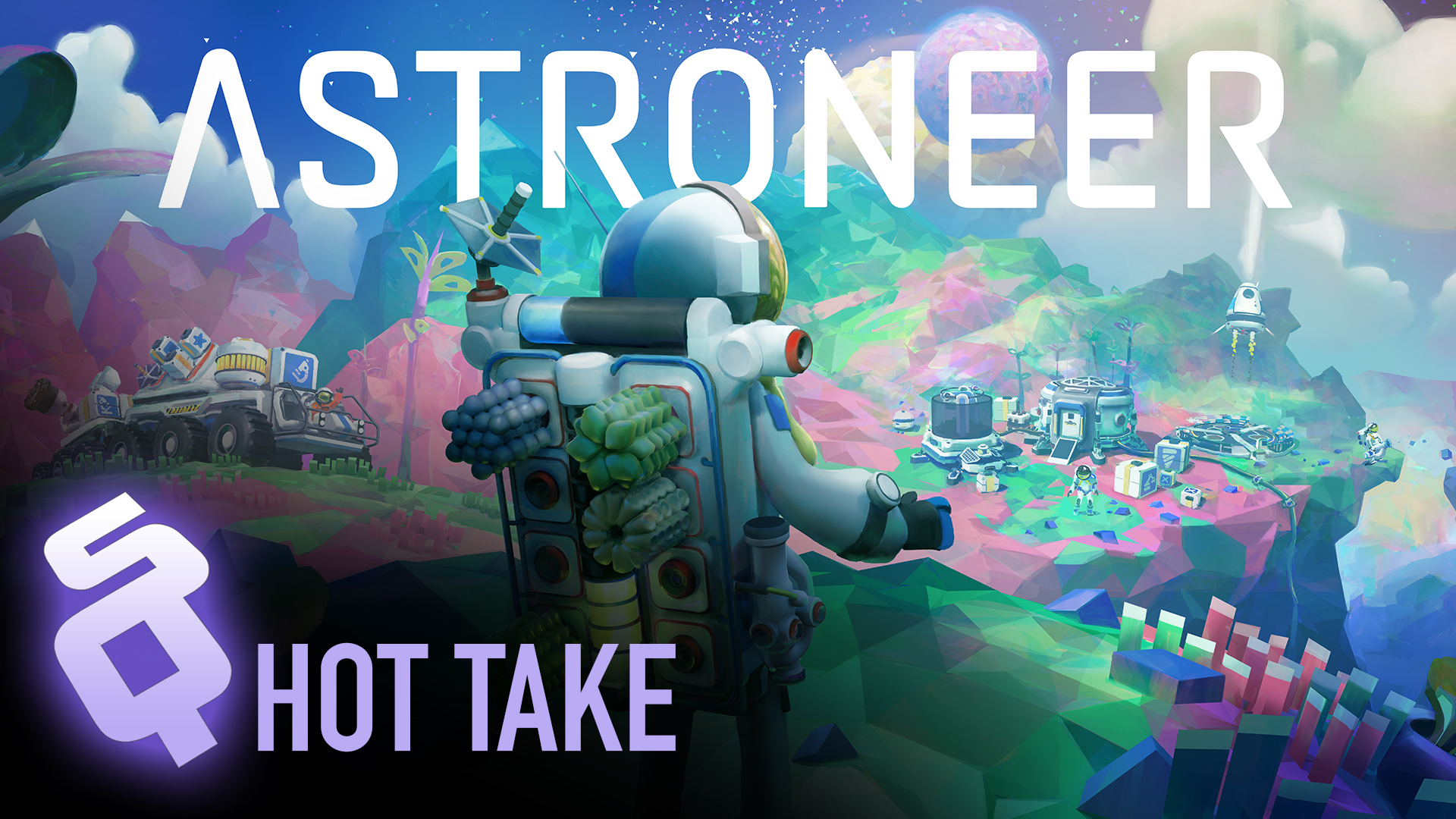All of the charm and roughness of the space exploration gem land on the Switch
Astroneer is a novel experience: a low-poly space exploration and base building game focusing on man’s expansion into the cosmos. Initially launching in 2016, it offers a sort of Minecraft-meets-Duplo take on astronaut life. Before we can beat up aliens with laser swords, we need to land on planets and build bases. The future is a lot of work!
“Work” is perhaps the optimal word here, because the game is built around it. We’re asked to craft, build, and explore the land for more places to craft and build. Then we follow that up with more building, more exploring, and more crafting. We’re given a pretty awesome tool that lets us rip apart the environment for resources and deform it to our heart’s content. There’s a (very lite) level of tension in how we handle our oxygen levels, but the more we craft tools and attach lines to our spacebase, the less we fear our world. At some point we even gain the ability to craft vehicles and go for longer treks… to do more work.

Astroneer is a sandbox game, giving us a place to play without a lot of boundaries but with plenty of tasks to check off of our to-do lists. For many, the game is almost therapeutic. Daily chores can make us feel welcome, and task management is a way to give us some steady meaning. It’s fun work, but still work.
The game fits well on Nintendo’s Switch, and almost becomes its own experience. On a PC or playing through a big screen TV, we angle more towards exploring and taking in the sights — it’s easy to get distracted. But while in handheld mode I find that the game feels more focused, as if the smaller screen makes us more dedicated towards completing tasks and crafting. It’s likely because we’re typically doing something else when playing Switch games in handheld mode, like watching the latest episode of Peacemaker or hanging out in the Barnes & Noble manga section while our child is looking through the latest volumes of My Hero Academia. That means that we’re more apt to start and stop playing a game quickly, and in the case of Astroneer we probably focus on the short builds and crafts rather than taking rovers on cross-country trips.
The downside of playing in handheld mode is the hardware itself. The interface is made for a PC’s keyboard and mouse, and doesn’t make the easiest transition to a controller. Pointing, dragging & dropping, and aiming are less precise and often a bit cumbersome when we’re trying to move things around. The HUD is represented as the backpack we wear, which means there isn’t a shortcut or hot key; we have to manually move everything around. It’s not ideal with the Joy-Cons, and is much bigger problem with if there’s any drift in our controls. The menus themselves don’t do us any favors, as the typeface size is small, making the already somewhat oversimplified text tutorials that much more difficult to follow. It’s worth playing on a big screen early on, at least to get the hang of how the game functions.

But then, playing undocked, the game finds a nice stride.
The graphical style is purpose built to scale across screens, and its geometric aesthetic is friendly and playful. It feels like we’re playing with toys in a playset, snapping attachments to the shells and constructing bigger and more complex structures. It looks fine on the OG Switch’s screen, and I’m going to guess that it’s probably pretty smooth and poppy on the OLED version. I haven’t noticed any framerate drops or hiccups, and the only visual issues have been the camera sometimes not zooming or rotating as expected.
All in all, it’s a very solid port. The nature of simulation/crafting games is that there isn’t always an apparent overall goal. That’s the case with Astroneer, too, but it’s balanced by the ability to do some creative exploration. The depth of crafting is immense, and the worlds feel endless and substantial, with plenty of biomes to interact with. Hiccups aside, it’s prefect in bursts on the small screen and for more grand exploration when docked. It’s yet another place to play one of the most well-supported space sims. Especially if you can’t get enough of your space job.
This game is based on an eShop code provided by the publisher.


No Comments